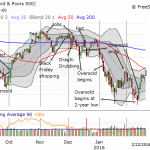If the mainstream is confused about exactly what rate hikes mean, then they are not alone. We know very well what they are supposed to, but the theoretical standards and assumptions of orthodox understanding haven’t worked out too well and for a very long time now. The benchmark 10-year US Treasury is today yielding less than it did when the FOMC announced their second rate hike in December. Thus, despite two rate hikes in between, the 10-year is largely nowhere.
This is not the only place where we can observe such lack of direct action. More importantly, eurodollar futures have accomplished much the same price history. That is far more of a problem for the orthodox framing because eurodollar futures are supposed to be a direct reflection of those rate hikes, or at least the effects of them on money rates in the future. Though there may not be a one-to-one relationship, should there not at least be some relationship?
The bond market is already skirting the contours of another Greenspan-ism, a possibility that my colleague Joe Calhoun and I talked about back in December though it might have looked like “interest rates had nowhere to go but up.” I believe his words were, “watch, we could very well revisit the conundrum here.”
The “conundrum” refers to, of course, how the bond market mystifies economists. In truth, because economists are statisticians they hold very little appreciation for investments or investing, preferring instead to try to quantify and compartmentalize (according to efficient markets and rational expectations theory) every little bit so as to reduce price information to meaningless but numerical platitudes. I have already discussed at some good length the converse condition a year ago in their form of “term premiums.”
At issue is what makes an interest rate. Most of the time, it is market forces of all kinds of perceptions competing for attention and being ruthlessly evaluated. In times like this, one of those vying for consideration is monetary policy. Economists and central bankers have an established tendency to make monetary policy the primary parameter in all financial arrangements, but more so in things like the “risk free” rate or eurodollar futures where Fisherian deconstruction seems to demand those priorities.
The Federal Reserve had occasion to preview these conditions in the middle of the last decade. We know that was the height of the housing bubble, but it was also the apex of another kind of bubble, a sort of self-congratulatory echo chamber where everything that was good was put on the Fed’s side of the ledger and on the flimsiest of evidence. That included, as it turned out, several things the Fed hadn’t even done yet, the “non-standard” policies like ZIRP and QE.
The Federal Reserve Board’s Division of Research and Statistics published one such paper in 2004. The US central bank was very well aware of the Japanese central bank’s struggles with “non-standard” policy and therefore wished to provide “evidence” basically for how they would get it right where Japan did not. In other words, the Japanese were empirically disproving QE and ZIRP, but this Fed offering (and others) decided that it wasn’t QE that was generically being challenged but rather Japanese QE under question.














Leave A Comment